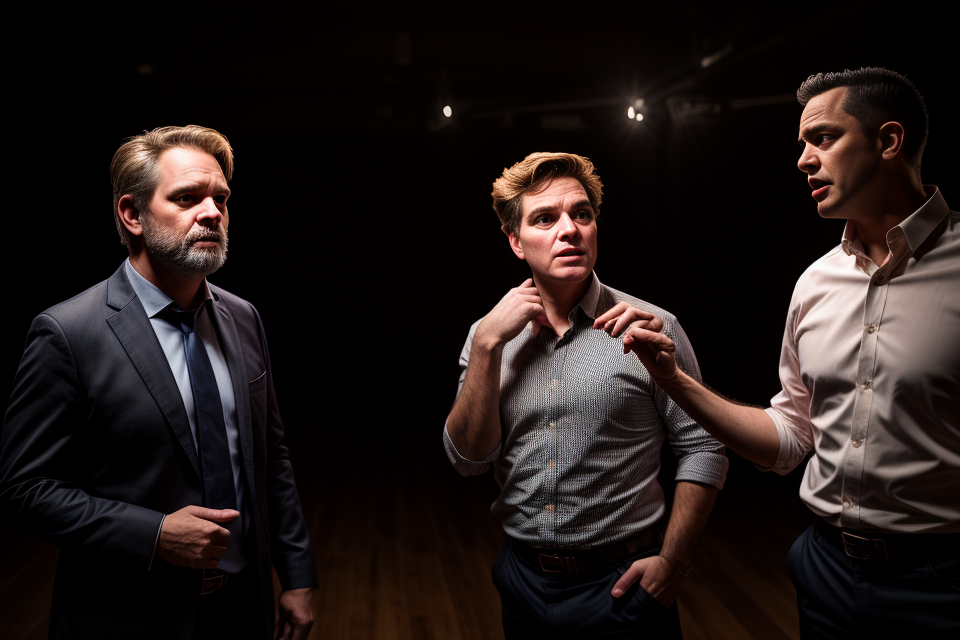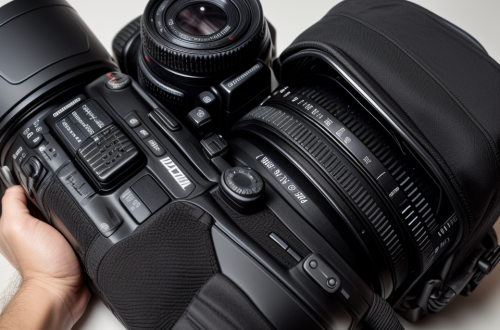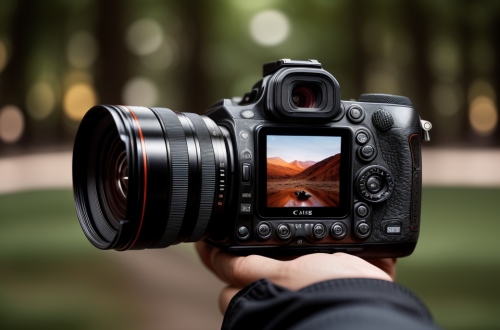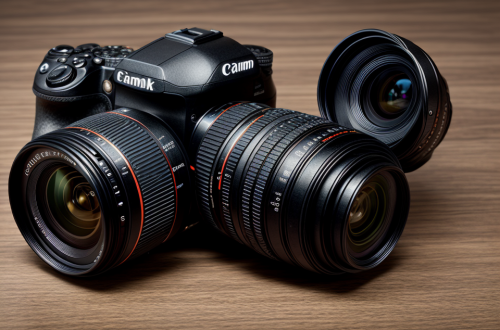The question of whether photography gear matters has been a topic of debate among photographers for years. Some argue that the right equipment is essential for capturing stunning images, while others believe that it’s the photographer’s skill and creativity that truly matter. In this article, we’ll explore both sides of the argument and examine the role that gear plays in the world of photography. Whether you’re a seasoned pro or a beginner just starting out, this debate is sure to spark some interesting thoughts and ideas about the role of gear in photography. So, let’s dive in and see what the fuss is all about!
The Importance of Gear in Photography
Understanding the Role of Gear in Taking Better Photos
In the world of photography, there is an ongoing debate about the importance of gear. Some photographers argue that gear plays a crucial role in taking better photos, while others claim that it is the photographer’s skill and creativity that matter most. In this section, we will explore the role of gear in photography and how it can impact the quality of your photos.
The Impact of Gear on Image Quality
One of the most significant ways that gear affects photography is by influencing the image quality. High-quality lenses, sensors, and other equipment can produce images with greater detail, sharpness, and color accuracy. For example, a camera with a larger sensor will generally produce better low-light performance and have more significant dynamic range than a camera with a smaller sensor. Similarly, a high-quality lens will produce images with less distortion and sharper details than a lower-quality lens.
The Effect of Gear on Creativity
While gear can have a significant impact on image quality, it can also affect a photographer’s creativity. The right gear can inspire new ideas and open up new possibilities for photographers. For example, a photographer with a high-quality macro lens may be inspired to capture new close-up shots that they wouldn’t have been able to create with a standard lens. On the other hand, the wrong gear can limit a photographer’s creativity by forcing them to work within certain constraints.
The Relationship Between Gear and Skill
It’s essential to recognize that gear is not a substitute for skill and creativity. A photographer with a high-end camera and lens will not automatically produce better photos than a photographer with a lower-end camera and lens. The quality of a photographer’s work is still largely determined by their skill, creativity, and experience. However, gear can play a supporting role in enabling photographers to capture their vision and express their creativity.
In conclusion, gear plays an essential role in photography, affecting both image quality and creativity. While it is not the only factor in producing high-quality photos, it can significantly impact the final result. As such, it’s important for photographers to carefully consider their gear choices and ensure that they have the right tools for their needs.
The Impact of High-Quality Gear on Image Quality
While it is widely accepted that the photographer is the most important factor in creating a high-quality image, the question remains whether high-quality gear plays a significant role in the overall image quality. This section will explore the impact of high-quality gear on image quality, and whether it can make a difference in the final outcome.
- The role of sensor size in image quality
- Larger sensors and their impact on image quality
- The benefits of full-frame sensors over APS-C and micro four-thirds sensors
- The importance of lens quality
- The difference in image quality between high-end and low-end lenses
- The impact of lens aperture on image quality
- The effect of high-quality accessories on image quality
- The benefits of high-quality tripods, filters, and other accessories
- How these accessories can enhance the overall image quality
- The role of camera settings in image quality
- The importance of proper exposure, focus, and white balance in creating high-quality images
- How high-quality gear can help photographers achieve optimal camera settings.
The Role of Skill in Photography
The Impact of Skill on Photo Quality
Photography is both an art and a science, and while the right gear can certainly help, it is ultimately the photographer’s skill that determines the quality of their photos. Skill encompasses a range of factors, including technical knowledge, creative vision, and the ability to effectively communicate through images.
Technical Knowledge
Technical knowledge refers to the understanding of camera settings, exposure, focus, and other aspects of photography that are essential for capturing high-quality images. A skilled photographer knows how to use their camera to its full potential, taking advantage of features like aperture, shutter speed, and ISO to achieve the desired effect. They understand the principles of exposure and can adjust settings to create the perfect exposure for a given scene.
Creative Vision
Creative vision is the ability to see and capture unique, compelling images. A skilled photographer has an eye for composition, light, and color, and can use these elements to create striking photographs. They can visualize the final image and make the necessary adjustments to capture it, whether it’s through camera settings, framing, or other techniques.
Communication
Effective communication is key to creating powerful images. A skilled photographer knows how to convey their message through their photographs, whether it’s a feeling, an idea, or a story. They can use light, color, and composition to evoke emotions and tell a story, making their images more impactful and memorable.
In conclusion, while photography gear can certainly help, it is the photographer’s skill that ultimately determines the quality of their photos. Technical knowledge, creative vision, and the ability to communicate through images are all essential factors that contribute to a skilled photographer’s success.
The Role of Practice and Experience in Photography
Photography is an art form that requires both technical skill and creative vision. While some argue that the gear you use is not as important as the skill and experience you bring to the table, the truth is that practice and experience play a crucial role in shaping your photography skills.
Here are some ways in which practice and experience shape your photography skills:
- Understanding Your Equipment: As you use your camera more often, you develop a better understanding of how it works and what it’s capable of. This knowledge allows you to make more informed decisions about how to use your equipment to achieve the desired results.
- Developing an Eye for Composition: With practice, you begin to develop an eye for composition, which is the art of arranging visual elements in a way that is aesthetically pleasing. This skill is essential to creating strong, impactful photographs.
- Learning to Edit: Photography is not just about taking pictures; it’s also about editing them to create the final product. As you gain experience, you learn how to edit your photographs to bring out the best in them.
- Building Confidence: With practice, you become more confident in your abilities, which allows you to take more risks and try new things. This confidence is essential to growing as a photographer and pushing the boundaries of your craft.
Overall, while gear can certainly help you achieve certain effects or capture certain types of shots, it’s ultimately the skill and experience of the photographer that determines the quality of the final product. So while gear matters, it’s not the only factor to consider when it comes to photography.
The Balance Between Gear and Skill
Finding the Right Balance for Your Photography Needs
As a photographer, it’s essential to understand that there is a balance between gear and skill in photography. While some photographers may argue that gear is the most important factor in producing high-quality images, others may argue that skill and creativity are more important. The truth is that both gear and skill play a crucial role in achieving the desired results in photography.
However, it’s essential to find the right balance between gear and skill for your specific photography needs. Here are some tips to help you achieve this balance:
- Define your photography goals: The first step in finding the right balance between gear and skill is to define your photography goals. Are you a professional photographer looking to make a living from your work, or are you a hobbyist who enjoys taking pictures for fun? Knowing your goals will help you determine the level of gear you need to achieve them.
- Understand your shooting style: Your shooting style can also influence the amount of gear you need. For example, if you enjoy shooting landscapes, you may not need as much gear as a photographer who specializes in action photography. Understanding your shooting style will help you determine the type of gear you need to achieve your desired results.
- Set a budget: Setting a budget for your photography gear is essential to avoid overspending and ensure that you get the most value for your money. Consider your financial situation and the type of gear you need before making any purchases.
- Consider the quality of your images: While high-end gear can produce high-quality images, it’s not the only factor that affects image quality. Skill, creativity, and post-processing techniques can also play a significant role in producing high-quality images. Don’t rely solely on gear to produce great images, but consider the quality of your images as a whole.
In conclusion, finding the right balance between gear and skill is essential for achieving the desired results in photography. By defining your photography goals, understanding your shooting style, setting a budget, and considering the quality of your images, you can find the right balance between gear and skill for your specific photography needs.
The Benefits of Investing in Gear for Skilled Photographers
Enhanced Image Quality
Skilled photographers can significantly benefit from investing in high-quality gear. Advanced cameras and lenses can capture more detail, have better low-light performance, and offer greater dynamic range, resulting in images with enhanced quality. These features can enable skilled photographers to create images that are technically sound and visually appealing.
Greater Creative Control
High-end gear can offer skilled photographers greater control over their images. Advanced camera settings, such as ISO, shutter speed, and aperture, allow photographers to achieve the desired exposure and creative effects. Moreover, high-quality lenses provide greater control over depth of field, enabling photographers to produce images with a specific focus or blurred backgrounds. These options give skilled photographers the tools to execute their creative vision with precision.
Faster Workflow and Efficiency
Investing in top-notch gear can lead to a faster workflow and greater efficiency for skilled photographers. Advanced cameras with faster autofocus systems and quicker burst rates can help capture critical moments more easily. Moreover, high-quality lenses can offer quicker and smoother focusing, enabling photographers to stay on top of fast-paced scenes. This efficiency can be crucial for skilled photographers working in various genres, including sports, wildlife, and event photography.
Professional Appearance and Credibility
High-end gear can contribute to a professional appearance and enhance credibility among skilled photographers. Clients and clients are often impressed by photographers who can produce high-quality images using advanced equipment. Investing in professional-grade cameras and lenses can communicate a level of commitment and expertise, which can lead to increased trust and business opportunities. Furthermore, high-quality gear can be essential for photographers looking to work with high-end clients or publications that demand the highest standards of image quality.
Preservation of Investment
Lastly, investing in high-quality gear can be a wise decision for skilled photographers, as it can help preserve their investment in the long run. As technology advances, older or lower-end gear may become obsolete, leading to a decline in image quality. By investing in cutting-edge gear, skilled photographers can ensure that their images remain competitive and of the highest quality, even as technology evolves. This foresight can help protect their investment and ensure continued success in their photography careers.
The Cost of High-End Gear
The Financial Impact of Investing in High-End Gear
Investing in high-end photography gear can be a significant financial commitment, but it can also provide numerous benefits. Here are some factors to consider when evaluating the financial impact of investing in high-end gear:
- Resale Value: High-end camera bodies and lenses can retain a significant portion of their value, even after several years of use. This means that if you decide to sell your gear, you may be able to recoup some of your initial investment.
- Renting Opportunities: If you cannot afford to purchase high-end gear outright, you may be able to rent it instead. This can be a cost-effective way to access top-of-the-line equipment without breaking the bank.
- Insurance: Investing in high-end gear may also require you to purchase additional insurance to protect your investment. This can add to the overall cost of owning high-end gear, but it can also provide peace of mind in case of accidental damage or theft.
- Access to Advanced Features: High-end gear often comes with advanced features that can enhance your photography skills and creativity. These features may include advanced autofocus systems, high-resolution sensors, and sophisticated image processing algorithms. By investing in high-end gear, you may be able to capture images that were previously impossible or challenging to achieve.
- Long-Term Cost Savings: While the initial cost of high-end gear can be daunting, it can also lead to long-term cost savings. High-end gear is often more durable and reliable than entry-level gear, which means you may not need to replace it as frequently. Additionally, high-end gear can often produce higher-quality images, which can save you time and money in post-processing.
Overall, the financial impact of investing in high-end gear depends on your individual circumstances and priorities. While it can be a significant investment, it can also provide numerous benefits that can enhance your photography skills and creativity.
Alternatives to Expensive Gear for Budget-Conscious Photographers
For photographers who are budget-conscious, high-end gear may not be a feasible option. However, this does not mean that they have to compromise on the quality of their photos. There are several alternatives to expensive gear that can still produce great results.
1. Invest in a Good Tripod
A tripod is an essential piece of equipment for any photographer, especially those who are on a budget. It allows for more creative freedom when taking photos and can also help to improve the overall quality of the shot. A tripod can also be used to stabilize the camera during long exposures, allowing for more flexibility in low light conditions.
2. Use Prime Lenses
Prime lenses are a cost-effective alternative to zoom lenses, and they can produce stunning results. They tend to have a wider aperture, which allows for more control over the depth of field and can create a more professional look to the photos. Additionally, prime lenses are often sharper and have better image quality than zoom lenses.
3. Utilize Natural Light
Natural light is a photographer’s best friend, and it is often the most cost-effective lighting option. It can be used to create beautiful, soft light that can add depth and dimension to a photo. Additionally, natural light is easily accessible and can be used in a variety of settings, making it a versatile option for budget-conscious photographers.
4. Consider Used Equipment
Purchasing used equipment can be a great way to save money on photography gear. Many photographers upgrade their equipment frequently, which means that there is a constant supply of used gear on the market. This can be a great option for those who are on a budget, as it allows them to get their hands on high-quality equipment at a fraction of the cost.
In conclusion, while high-end gear can be expensive, it is not necessary for producing great photos. By investing in a good tripod, using prime lenses, utilizing natural light, and considering used equipment, budget-conscious photographers can still achieve stunning results without breaking the bank.
The Limitations of Gear
The Role of Environment and Lighting in Photography
When it comes to photography, it is widely believed that the quality of the gear you use plays a significant role in the final output of your images. However, many argue that the limitations of gear should not be underestimated. One of the key factors that can impact the quality of your photographs is the environment and lighting conditions in which you are shooting.
In outdoor photography, the environment can have a huge impact on the final image. Factors such as weather conditions, time of day, and location can all play a role in how your photographs turn out. For example, shooting during the golden hour (just after sunrise or before sunset) can create beautiful, warm light that is perfect for portraits or landscapes. On the other hand, shooting in the middle of the day with harsh midday sun can create unflattering shadows and contrast.
Similarly, the quality of light can also have a significant impact on your images. Soft, diffused light is often considered the best for portraits and can be achieved by shooting on an overcast day or using a softbox or umbrella to modify the light. Hard, directional light is often used for more dramatic images and can be achieved by shooting during the golden hour or using a flash.
In conclusion, while the gear you use can certainly impact the quality of your photographs, it is important to remember that the environment and lighting conditions in which you are shooting can also play a significant role. By paying attention to these factors and making adjustments as needed, you can create stunning images even with basic gear.
The Impact of Gear Limitations on Creativity
Gear limitations can have a significant impact on creativity in photography. When photographers are constrained by the capabilities of their equipment, they must find innovative ways to achieve their artistic vision. This constraint can lead to more creative and imaginative photography, as photographers push the boundaries of what is possible with their equipment.
Furthermore, gear limitations can force photographers to focus on the essentials of photography, such as composition, lighting, and subject matter. This emphasis on the fundamental elements of photography can lead to a deeper understanding of the craft and a more deliberate approach to image-making.
Additionally, gear limitations can foster a sense of resourcefulness and problem-solving among photographers. When faced with equipment constraints, photographers must think outside the box and find ways to achieve their desired results within the limitations of their gear. This can lead to more experimentation and innovation in photography, as photographers push the boundaries of what is possible with their equipment.
In conclusion, gear limitations can have a profound impact on creativity in photography. By forcing photographers to think outside the box and focus on the fundamental elements of photography, gear limitations can lead to more imaginative and innovative image-making.
Recap of the Importance of Gear and Skill in Photography
The debate surrounding the role of gear in photography has been ongoing for many years. Some argue that the right equipment is essential for capturing stunning images, while others claim that it is purely a matter of skill and technique. In this section, we will take a closer look at the importance of both gear and skill in photography.
- The Role of Gear in Photography
- Gear plays a crucial role in photography as it can greatly impact the final output of an image. The quality of a camera, lenses, and other accessories can affect the sharpness, clarity, and overall aesthetic of a photograph. Additionally, certain types of gear can provide greater flexibility and creative control over the photography process.
- However, it is important to note that gear alone does not guarantee success in photography. Even the most expensive and advanced equipment cannot compensate for a lack of knowledge and skill.
- The Importance of Skill in Photography
- Skill is a crucial factor in photography as it determines the photographer’s ability to use the gear effectively. This includes knowledge of camera settings, composition, lighting, and post-processing techniques. A skilled photographer can produce high-quality images even with limited or low-end gear, while a novice may struggle to achieve the same results with top-of-the-line equipment.
- Additionally, skill is important in allowing photographers to adapt to different situations and capture unique images. A skilled photographer can think creatively and problem-solve on the fly, making the most of their gear and the environment around them.
In conclusion, both gear and skill are important factors in photography. While gear can provide advantages and creative possibilities, it is ultimately the photographer’s skill and technique that determines the quality of their images.
Final Thoughts on the Great Debate
In conclusion, the question of whether photography gear matters is a complex one, with valid arguments on both sides. On one hand, some argue that gear does not matter and that it is the photographer’s vision and skill that determine the quality of their images. On the other hand, others argue that gear can have a significant impact on the final result, and that high-quality equipment can make it easier for photographers to achieve their desired vision.
It is important to remember that both sides of the debate have valid points, and that the relationship between gear and photography is not a simple one. Ultimately, the best approach may be to strike a balance between investing in high-quality equipment and honing one’s own skills and creativity as a photographer. By doing so, photographers can ensure that they have the tools they need to create stunning images, while also pushing themselves to grow and improve as artists.
FAQs
1. What is the definition of photography gear?
Photography gear refers to the equipment used by photographers to capture and create images. This includes cameras, lenses, tripods, lighting equipment, and other accessories.
2. Why is photography gear important?
Photography gear can greatly impact the quality of your images. Different gear can offer different features and capabilities, such as higher resolution, wider aperture, and faster shutter speeds, which can help you capture better images in various shooting conditions. Additionally, good gear can make your photography process more comfortable and efficient, allowing you to focus on your creativity and composition.
3. Can expensive photography gear guarantee better photos?
Expensive photography gear can offer more advanced features and capabilities that can help you capture better images, but it does not guarantee better photos. Skill, creativity, and experience are also important factors in creating great images. Additionally, a photographer can make the most of any gear, regardless of its cost, if they have a good understanding of photography principles and techniques.
4. Is it necessary to invest in expensive photography gear?
It depends on your needs and goals as a photographer. If you are a professional photographer or serious hobbyist, investing in good gear can be essential for producing high-quality images and meeting client expectations. However, if you are just starting out or photography is a hobby, you may not need to invest in expensive gear right away. You can always upgrade as you gain more experience and your skills improve.
5. Are there any downsides to investing in expensive photography gear?
Investing in expensive photography gear can be costly and may not be necessary for all photographers. Additionally, relying too heavily on gear can distract from the importance of developing your skills and creativity as a photographer. It is important to balance the investment in gear with the development of your photography skills and knowledge.
6. How can I choose the right photography gear for me?
Choosing the right photography gear depends on your needs and goals as a photographer. Consider factors such as your budget, the type of photography you want to pursue, and the specific features and capabilities you need. Research and compare different options, read reviews, and try out gear before making a purchase. Additionally, seek advice from experienced photographers and experts to help you make an informed decision.





